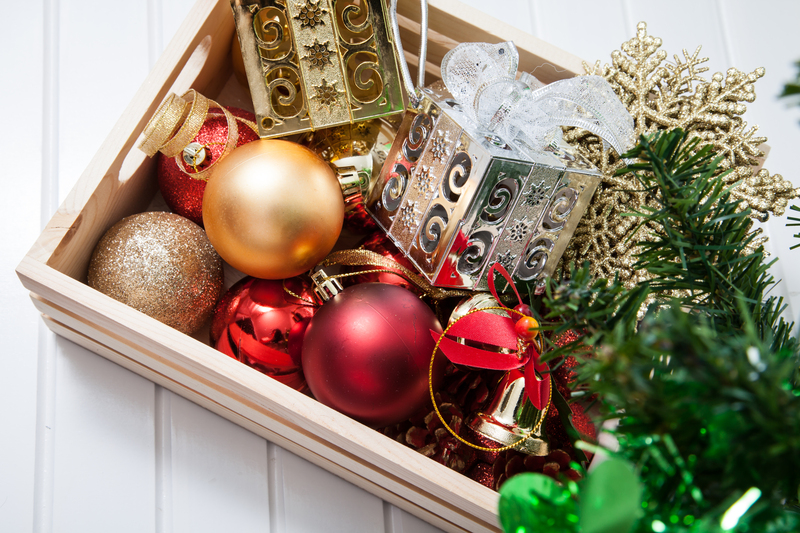Smart Ways to Protect Your Freezer During Periods of Disuse
If you're planning to leave your freezer unused for an extended period--whether because of a long vacation, seasonal closure, home remodeling, or any other reason--it's critical to adopt precautionary measures. Freezer inactivity, if not managed properly, can result in unpleasant odors, mold growth, mechanical issues, and even permanent damage. Smartly protecting your freezer during periods of disuse ensures it remains in optimal condition for when you need it again.

Why Is It Important to Protect Your Freezer During Disuse?
Many people underestimate the challenges that come with turning off or neglecting a freezer for weeks or months. Inactive freezers can become breeding grounds for bacteria, mold, and pests, as well as be subjected to rust, warping, and malfunctioning components.
- Preserving Longevity - Proactive care avoids expensive repairs and prolongs appliance lifespan.
- Eliminating Odors and Mold - Residual moisture and food traces can transform your freezer into an unpleasant, unhygienic space.
- Preparedness - A well-protected freezer will be ready for immediate use when you return, saving time and effort.
Preparing Your Freezer for Disuse: A Step-by-Step Guide
Before turning off or leaving your freezer unused, it's vital to follow an organized checklist. Protecting your freezer isn't just about unplugging it--it's about enforcing a thorough cleaning and safeguarding routine to keep it pristine and functional. Here's how:
1. Remove All Items and Defrost the Freezer
Any food left behind increases the risk of spoilage, pest infestations, and mold. Empty the freezer completely, discarding anything past its expiration or that you won't use. Transfer remaining usable items to another freezer or cooler.
- Defrost your freezer: Turn the appliance off and allow ice to melt naturally. Do not chip away at the ice, as this can damage internal surfaces.
- Soak up water: Place towels at the base to absorb runoff. Dispose of excess water properly to prevent pooled moisture, which can cause rust and mildew.
2. Clean the Interior Thoroughly
A spotless interior is crucial for protecting your freezer during downtime. Don't cut corners on this step:
- Remove detachable shelves, baskets, and trays. Soak and scrub them in warm, soapy water.
- With a soft cloth and a mild baking soda solution (1 tablespoon baking soda per quart of water), wipe down all inside surfaces. Baking soda neutralizes lingering odors and is safe for most finishes.
- For stubborn stains or odors, use a mixture of vinegar and water for extra disinfecting power.
- Rinse with a damp clean cloth, and dry all components thoroughly. Leaving any moisture inside can foster mold or mildew.
3. Clean and Inspect Door Seals (Gaskets)
Dirty or damaged gaskets can lead to ineffective sealing, letting in air, moisture, or even pests.
- Wipe gaskets with a damp, soapy sponge, followed by a clean, dry cloth.
- Check for cracks, warping, or brittleness. If you notice significant wear, consider replacing the gasket before next use.
- Lightly rub a thin film of petroleum jelly along the gasket to maintain flexibility and ensure a tight seal.
4. Clean the Exterior and Vents
Don't overlook the outside! Dust, pet hair, and grime can collect on vents and coils, impeding performance.
- With the appliance unplugged, use a vacuum or brush to clear dust from the condenser coils and air vents (typically at the back or underneath).
- Wipe the exterior with a damp cloth and mild detergent. Dry thoroughly.
5. Leave the Door Slightly Open
One of the best ways to safeguard your freezer during periods of non-use is to prevent airtight closure. Propping the door or lid open just a little ensures proper air circulation and blocks mold and musty smells.
- Use a rolled towel or a specifically designed appliance spacer to keep the door ajar by 1-2 inches.
- Secure the door with tape if necessary to prevent accidental closure or tampering.
Warning: If your freezer is accessible to children or pets, ensure the door cannot be closed or that the unit is in a safe, supervised location to avoid accidents.
6. Unplug and Protect the Power Cord
To eliminate any risk of electrical hazards or power surges, always unplug the freezer from the wall. Coil the cord loosely and secure it to the back of the appliance or nearby.
- Do not wrap the cord tightly or trap it beneath the appliance. This prevents damage and preserves cord flexibility.
- If the freezer is stored in a damp environment (like a basement or garage), elevate the cord and plug off the ground to avoid accidental exposure to water.
Extra Tips to Safeguard Your Freezer During Disuse
1. Choose the Right Storage Location
- Place the freezer in a cool, dry area, ideally indoors. Avoid unheated spaces where temperatures can plummet, as extreme cold can damage electronic controls or lubricants.
- If left in a garage or shed, place a breathable cover (not airtight) over the appliance to protect it from dust and pests.
2. Prevent Pest Intrusion
Vermin can be attracted to food residues or even seek shelter in an unused freezer. Thorough cleaning and keeping the door ajar is your best defense, but you can also:
- Sprinkle baking soda inside to draw away moisture and deter pests.
- Consider using pet-safe pest deterrents (such as cedar chips or essential oils) in the vicinity.
3. Use Moisture Absorbers
To further reduce humidity and prevent musty odors, place a box of baking soda, activated charcoal, or moisture-absorbing packets inside the freezer. Remember to check on them if the freezer is in long-term storage.
4. Periodically Check the Freezer
If you can, inspect your appliance every few weeks to ensure the door is still ajar, no moisture has accumulated, and there are no unwelcome odors or pests. Quick spot-checks enhance your freezer protection strategy during extended disuse.
What About Keeping a Freezer Running While Empty?
Many homeowners ask if it's better to keep a freezer plugged in but empty rather than completely powered down.
- Pros: Avoids defrosting/refreezing cycles and minimizes moisture. Beneficial in very humid climates or if you plan to use the freezer again soon.
- Cons: Wastes electricity, can dry out seals, and may lead to unnecessary wear. Odor can develop if any food is forgotten or if the freezer develops frost buildup.
Our recommendation: If the freezer will go unused for more than 1-2 weeks, it's usually best to shut it down and follow the smart freezer protection steps outlined above.
How to Restart a Freezer After a Period of Disuse
- Inspect the interior and exterior for pests, debris, or mold. Wipe down and re-clean if necessary.
- Reconnect the power cord and ensure the outlet is safe and functional.
- Allow the freezer to run empty for several hours (or overnight) to reach the proper freezing temperature.
- Test the door seal by closing a piece of paper in the door and pulling. You should feel a strong resistance; otherwise, inspect/replace the gasket.
- Restock with food only when the appliance is at optimal freezing temperature.
Common Mistakes to Avoid When Storing a Freezer
- Leaving the door/lid tightly closed: This traps humidity and causes odor and mold.
- Skipping thorough cleaning: Tiny crumbs result in bad smells and pest attraction.
- Forgetting to unplug: Leads to wasted electricity and increases risk of surges or electrical faults.
- Storing in a very humid, unventilated place: Speeds up rusting and gasket degradation.
- Not checking periodically: Critters or mold proliferate unchecked in neglected appliances.

Frequently Asked Questions (FAQs) on How to Protect Your Freezer During Disuse
How long can a freezer be left unused?
A freezer can remain out of use indefinitely, provided it is fully cleaned, dried, unplugged, and left open. If the environment is highly humid or not climate controlled, consider stepping up moisture and pest precautions.
Should I leave my freezer plugged in during disuse?
Usually, no. For prolonged periods of inactivity, unplugging eliminates fire hazards, utility waste, and electrical malfunctions. If you expect to use it again soon and are worried about humidity, running it empty for short periods is acceptable--but it's not energy efficient.
How do I prevent mold and mildew in a freezer that's not in use?
Complete interior and gasket cleaning, thorough drying, propping open the door, and using moisture absorbers will effectively stop mold growth.
Conclusion: Keep Your Freezer Fresh, functional, and Ready--Even During Disuse
Protecting your freezer during periods of disuse doesn't have to be complicated. With thoughtful, smart strategies--cleaning, drying, propping open, unplugging, regular checks, and environmental controls--your investment can last longer and be odor-free and functional when you need it again.
Whether you're leaving home for a season, pausing a business, or simply taking a break from regular freezer use, commit to these smart freezer protection solutions. You'll save time, money, and avoid messy surprises later. Remember, a little care today keeps your freezer (and the food you'll eventually store) safe and sound for years to come!
```